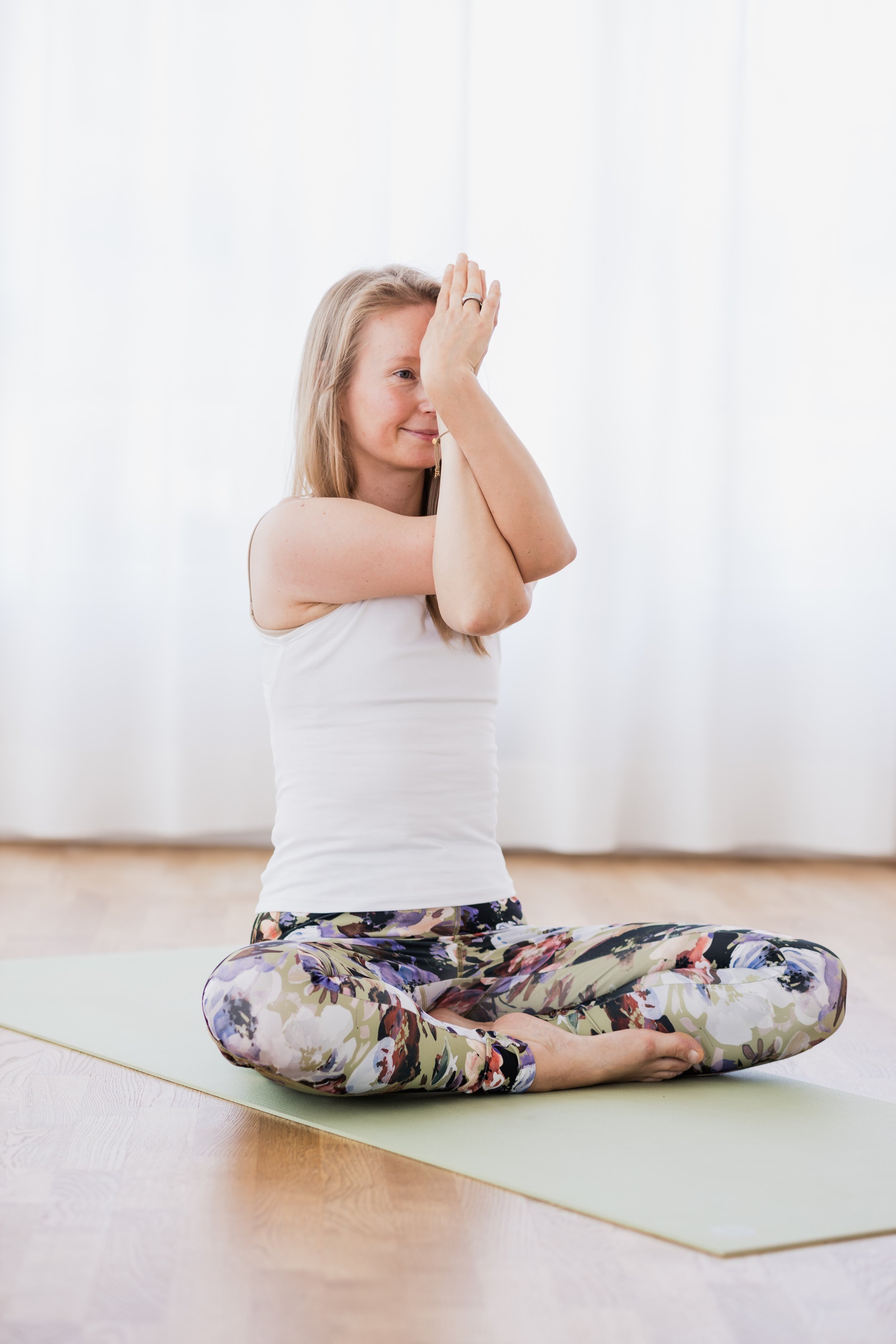Short and simple yoga practice to release tension in the upper body
Garudasana arms is a simple yoga pose that opens the upper back and removes stiffness in the shoulders, trapezius, and rhomboids.
Autumn has arrived and with it our daily routines—work, chores, family responsibilities, and our beloved hobbies—there's a vibrant energy in the air. Some of us are relishing the return to a more active life after the summer. Yet, for others, the hustle and bustle of post-summer life can quickly become overwhelming if we forget to weave moments of self-care into our daily journey. It's during these times that we feel like we're shouldering the weight of the world.
But remember, "It's not the load that breaks you down, it's how you carry it." These words beautifully remind us that we have the power to shape our experience. To help support your wellbeing in the midst of a sometimes hectic life, I'm sharing with you short yoga practice that is targeted to create space and release tension in the upper body area. This 17-minute recorded yoga practice just might be exactly what you need to transform your (work)day for the better. All you need is a chair and a yoga strap or something similar. This practice is so simple and accessible that you can do it right at your desk, infusing tranquility into your busy schedule.
The focus here is on the neck, shoulders, and upper back—areas where many of us are carrying a lot of tension. The hours spent in front of screens, the tender moments with our children, and the daily tasks that keep our homes running smoothly—these all contribute to the tension that builds up in our upper bodies. We find ourselves hunched forward, our chests tight, and our shoulders rounding, like Atlas carrying the weight of the world. We need opposing movements to guide our bodies toward balance.
And let's not forget the toll on our necks as we scroll through smartphones, heads tilted forward. Did you know that a human head, on average, weighs around 5 kilograms? When it's tilted forward by just 15%, that weight nearly triples to 12 kilograms. Imagine the strain that places on your neck and spine. Looking down at your electronic device? That's a staggering 27 kilograms of pressure. Your cervical spine wasn't designed for such loads!
But it's not just the physical discomfort. This hunched posture negatively impacts your entire respiratory system as well. Your breath becomes shallow, and you might find yourself caught in rapid inhalations. It's time to reclaim your ease and breathe more freely.
Often, the aches in our bodies are a call from within—a sign of a disconnection between our body, mind, and heart. To prevent these aches from growing too burdensome, pause and ask yourself:
How am I feeling right now?
Why am I feeling this way?
What can I learn from this?
As Audre Lorde beautifully stated, "Our feelings are the most genuine paths to knowledge." Embrace your feelings, reconnect with yourself, and carry life's load with grace.

